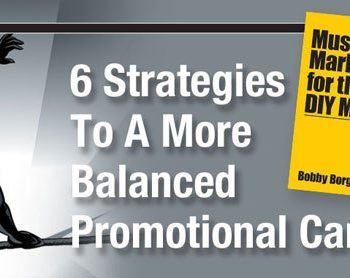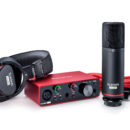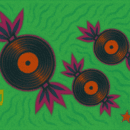In my 20 years of teaching and consulting, I couldn’t tell you the number of times I’ve heard a young musician say, “I just do what I do, and if anyone likes it, they’ll buy it.”
My reply? “Congratulations, you’re a true artist.”
But as you get a little older and your responsibilities increase with school loans, mortgages, and even kids, this attitude carries a significant amount of risk, especially when you don’t have other sources of income to take care of life’s basic necessities.
Thus, to increase your chances for success, artists must adopt a more structured business and marketing approach from the start that involves researching, goal-setting, strategizing, assembling, and executing a customized plan of attack.
This approach—called “the complete marketing process”—is used by the world’s most innovative companies—and now it can be used by you, too. While the material presented in this guide is just an overview, it is expanded in my book Music Marketing For The DIY Musician (Second Edition) found on amazon.com or at BobbyBorg.com.
So, what are you waiting for! Let’s start chipping away at these 10 helpful tips.
1. Describe Your Company’s Vision and Set Your Career on Course
The marketing process typically starts with a “vision”—a declaration that defines that ultimate place you’d like your company to be in about seven to 10 years down the road.
Your vision is what gets you out of bed in the morning and gives your life meaning. I’m not talking about the color of your mansion in the French Riviera or the remote island you want to own in the Maldives, but rather a vivid musical/business focus that complements your strengths and passions and sets your career on course.
To illustrate, long before Marilyn Manson ever became known to the world, he envisioned himself as being a “pop star who would one day shock the world.” Personal sources say that when he was just a student of journalism at a small community college, he actually had drawings of costumes and stage set designs along with other business and creative details. This was Manson’s “North Star”—his guiding light. He held true to that vision and projected it into everything his band or “company” did. Several Platinum albums and Top 10 hits later, he succeeded at living his dream.
So then, what are your strengths and passions, and what is your overall musical vision in about seven to 10 years?
Do you see yourself playing a style of R&B, rock, folk, hip-hop, jazz, or perhaps some new subgenre you aim to create? Do you aspire to be a major recording/touring artist known all over the world, or forever a local independent musician happy to be surviving on your music? Will you sell records, tour, and create merchandise, or will you write and produce? What kind of artist identity will you project to your target fans: wholesome and sweet, gangsta and badass, intellectual and socially conscious, or something else? Do you want people to see you as a role model? Do you want to make people happy and hopeful? Will you be the voice for the oppressed and unfortunate? Or will you stand for certain values in the world that are important to society as a whole?
Look, gang, by determining what’s true to your heart and visualizing your higher and greater career and life purpose, you’ll be able to more easily chart the course to your desired destination.
2. Identify Opportunities or “Needs” by Conducting a SWOT Analysis
While keeping your internal strengths, passion, and overall vision at heart, now it’s time to examine the “external environment” of your organization more thoroughly and see how your musical vision matches up with people’s wants and “needs.” By doing this, you can further refine your true musical purpose, and even discover a void in the marketplace that you can fill better than anyone else.
As previously stated, Marilyn Manson had a clear vision of being a pop star who shocked the world. But he also identified and filled a specific societal need and void in the marketplace for an entertaining and horrifically dramatic new stage personality, similar only to what a now-aging Alice Cooper had done 23 years before.
In yet another example, guitarist Pat Metheny always envisioned himself as being an exceptional and forward-moving jazz musician. But he also identified and filled a specific industry need and void in the marketplace for an exciting new artist who could propel traditional jazz into the future using new technologies, such as synthesizers and robotics, unlike any other jazz musician before him.
An extremely valuable tool to help you examine the external and internal environments of the marketplace is called a SWOT analysis. SWOT is an acronym that stands for strengths, weaknesses, opportunities, and threats. The purpose of this tool is to:
• Identify a consumer need or opportunity in the marketplace that matches well with your internal strengths.
• Convert any weaknesses you may have into company resources. And . . .
• Minimize or eliminate the threats or risks your company might face.
Primary research methods (surveys, interviews, observation, etc.), as well as secondary research techniques (blogs, trade associations, magazines, etc.) can be extremely helpful when conducting your SWOT analysis.
Whether or not this “bigger picture” approach is new to you, be assured that SWOT is a very common tool that has been successfully used in marketing for decades by top companies, and it is one with which you will soon become even more familiar.
3. Analyze Your Most Likely Customers and Target Your Market
Now that you have a more refined purpose and clearer idea of the external environment and the market need you will attempt to fill, it’s important to identify and thoroughly analyze the most important people in the world: your “most likely” fans. These are people or businesses that share similar characteristics and are most likely to come out to your shows, buy your music, or license your songs. Bottom line: You have to thoroughly understand your target audience. You must know where and how to reach them with consistent marketing messages designed to communicate your company’s common-ground beliefs, as well as your products’ meaningful and relevant benefits (i.e., what your products do for your target customers).
To describe your most likely fans, use any combination of factors you deem relevant and useful, including age range, gender, geographic location, lifestyles (activities, interests, opinions), and behavioral characteristics, such as why they go out to clubs and how often. Should your most likely customers be other businesses––for example, when you’re a composer serving ad agencies and music libraries––then use factors such as company size, number of employees, and geographic location.
The more narrowly you define or segment your customers, the more customized and personalized your products and marketing messages can be to appeal to them. It’s one thing to think of your fans simply as “metal heads” and another to think of them thoroughly as male, angst-ridden metal heads, aged 21 to 32, with annual incomes of $40K to $60K, who are interested in watching extreme sports, vaping, getting tattoos, and going to clubs once a week to see a high-energy show and to bond with like-minded people.
Once you win over your most likely fans (or primary segment) with customized marketing messages, you can then target your next likely fans (or secondary segment).
To conduct customer research, examine the fans of other bands in your genre or closely related genres, and also examine the fans you may already have. You can do this by visiting social media sites and reading what fans say, attending concerts and observing the audience, and just speaking with fans to discover what they want and need and what they may not even know they want or need.
Don’t worry, if at first you have trouble creating a fan profile—you’ll continually fine-tune and adjust it as you gain more experience as a marketer.
4. Learn from Your Competitors by Conducting a Competitor Analysis
Differentiation is crucial to your success, so the next step in the marketing process involves conducting a competitor analysis. This requires you to thoroughly analyze your competitors’ images, products, prices, distribution methods, and promotion strategies. What’s that, you say? You don’t have any competition? Of course you do! There are many levels of it, but for your purposes, competition could simply be defined as “any artist whom your most likely fan could see as being similar to you.” Or more to the point: “any artist who could draw attention away from you.”
To conduct a competitor analysis, pick two local artists and two national artists to examine. You can conduct simple research online to determine what works and doesn’t work for these artists and, more importantly, to find out what the fans of these artists think! This should provide detailed information to help you set your career apart in a way that’s meaningful to your target audience.
To illustrate, after the Police realized that other rock/reggae bands in England had not yet attempted to gain an edge in the United States market, it toured the U.S. relentlessly in vans on a bare-bones budget, won over audiences, and earned the position of being the first band of its kind in America. And as the late talent agent Ian Copeland told me in a personal interview, “The rest is history.”
And in a more current example, after Mona Haydar lived through years of religious and cultural discrimination at the height of America’s military involvement in the middle east, she began rapping over Syrian influenced beats while fully clad in her traditional Hijabi and is making her mark today as one of the first female Syrian-American rappers in the Indie music scene. Her song “Hijabi” was recently named as one of the best protest anthems by Billboard.
5. Demo Your Products and Services and Get Invaluable Feedback
The next few steps in the marketing process deals with “research and development.” This involves developing, testing, interpreting, and refining your products and services to get invaluable feedback from your target fan. “Feedback is the breakfast of champions,” says management expert Ken Blanchard. “It opens your eyes and gives you an opportunity to forecast the future.” Without it, you’re only creating in a vacuum. And that’s risky! Now consider this:
• The first step in the process involves developing a prototype of your products and services (or just a clear “idea” of them) to gauge the receptivity of your intended audience. This could simply mean writing and recording three to five songs inexpensively, imagining a brand name that captures the personality of your music, and considering a visual identity, such as a logo, that you sketch on a piece of paper.
• The second and third steps are deciding on the method of testing you’ll use (surveys, casual observation, interviews, etc.) and then conducting these tests on an audience via your social networks, an informal rehearsal room, or a club performance.
• The fourth and fifth steps involve deciding what your data really means and then determining what changes and/or additional testing (if any) need to be conducted. This might require you to go back and rethink your vision and SWOT analysis and even develop and test more recordings until you can show your idea is something about which people are truly excited.
As Edward McQuarrie explains in The Market Research Toolbox, market research can never provide guarantees, but it acts as an “uncertainty reducer.” It can help you predict the future and save you a significant amount of time and money, which might otherwise be spent on creating products that simply don’t sell. Keep in mind that the key focus of my book is to help musicians like you turn your art into a more successful business. It’s about creating music that truly matters to you, but also music that gets heard.
6. Set Your Marketing Plan Goals by Using the SMART Model
As soon as you feel positive that you have a product/service of which you are proud and that will appeal to your most likely fan, you should set your marketing plan goals for the next year. Written goals help provide short-term guidance on the path to achieving your long-term vision.
Goals should be expressed as specific (exact) and measurable (countable) objectives based on the sales and/or awareness you would like to achieve in the marketplace within one year from executing your plan. For example, your first-year goals might be based on getting X number of streams on each of your single-song releases, making back X percent of your initial investment of Y dollars, licensing X songs in film and television, or increasing your fan base from X to 5X fans.
Goals should also be established on realistic projections, observations, past successes, and available company resources to ensure they are attainable or “doable.” Consider how well your competitors are selling. Think about whether you have sufficient access to personal savings, family loans, and discounted services to meet expenses. And assess whether you have access to band members and fans who can share the workload. These are all important factors.
And finally, goals should include the general strategies you’ll use to help you arrive at your desired and specific destination at the end of the year.
In short, goals should follow the “SMART” model (a popular tool revised slightly by me to mean specific, measurable, attainable, road-mapped, and time based). And remember, goals should be high enough to challenge you, but never high enough to beat you.
7. Find the Right Blend of “Marketing Mix” Strategies to Achieve Your Goals
With your marketing goals firmly in place, you must now develop further the right mix of strategies to help achieve them. These strategies, appropriately called “marketing mix strategies,” include the “four P’s” of marketing (product, price, place, and promotion), as well as three other important building blocks (company branding, product branding, and measuring). Remember, these strategies will all be expanded upon in subsequent chapters, but they are introduced briefly below:
• Company Branding: This involves building a name, logo, slogan, attitude, look, and so forth that together create a unique image in the customers’ minds.
• Product/Service Branding: This involves creating strong names, packaging, and a personality that are consistent with the overall company brand, yet distinct from your other products/services and those of the competition.
• Product/Service Development: This is the process of finalizing your offerings (songs, beats, albums, merchandise, live performances, fan clubs, etc.) for the marketplace, and designing an expert customer service policy to meet the needs of your target fan.
• Price: This is the intersection of the amount you are willing to charge for your products/services and the amount your fans are willing to pay for them. Strategies may include keeping the price within consumer boundaries, donation pricing, free pricing, and more.
• Placement (or Place): This is the distribution of your products/services to places where your target fans will find them easily, such as specific online sites, live-performance venues or stores, and certain TV shows and video games.
• Promotion: This is the process of communicating your products’ unique features (what they are) and benefits (what they do) to stimulate the interest, attention, decision, and action of your target audience. This can be done via the following strategies: Internet, word of mouth, guerrilla marketing, radio promotion, sponsorships, publicity, direct marketing, sales promotions, face-to-face selling, advertising, and more. While there are many promotional methods, the ones you choose will depend on your audience, budget, experience, and careful research. And finally . . .
• Measuring: This is the continuous process of collecting, analyzing, and acting on important information collected from the marketplace. This might include feedback about the effectiveness of your marketing efforts and ideas from fans for new products and services. Computer programs like Excel and Access can aid you in organizing data.
Just in case it hasn’t yet sunk in—it’s not the individual marketing strategies (the parts) themselves that will help you to achieve your marketing goals, but rather the complete “mix” of strategies (the whole) functioning as one complete, integrated system of marketing communication. It’s the “right blend in the right amounts” that’s required. Thus, careful consideration must be given to how each strategy ultimately affects the others and ultimately affects your target customer.
For instance, if your brand identity strategy calls for promoting your fans’ perception of you as the “bad boys of rock,” you had better think twice before considering a place strategy including gigs at county fairs between the petting zoo and the cotton candy stand. [Laughing!] You get the idea.
As USC professor Ira Kalb puts it, “Marketing strategy planning is a lot like baking a cake—it requires the perfect mix of several ingredients all blended into one to achieve a desired outcome, but also a willingness to get feedback and the patience to carefully adjust the strategies accordingly until you get it right.” To which Harvard Business School professor John P. Kotter adds, “The strategy decisions you don’t make are just as important to the ones you do make.” This might seem like common sense, but as I frequently say, “Common sense is not always so common.”
8. Assemble a Marketing Plan of Attack™ and Present Your Ideas Effectively
Your next step (as if the above steps in the marketing process were not enough!) is to compile all of the information gathered in your research and planning and put it into a standard marketing plan format.
A marketing plan (or as I call it, a Marketing Plan of Attack™) is a written document that serves as a road map for your business idea and marketing campaign, a communicative tool to keep all the members of your organization on track, and even a sales document to attract potential investors, distributors, and others. Yup, you heard right! No matter if you are an artist recording an album to release it to fans or a composer building a studio to deliver tracks to ad agencies, a marketing plan could help you attract investors to fund your career. Marketing plans are tools business people expect, and they include language professionals are used to reading.
A Marketing Plan of Attack™ must be clearly written with complete, easily understandable sentences. The information is usually written in one of three ways: first-person plural (we), first-person plural possessive (our), or third person (your company name, or it or they). Your plan must also be concise (bigger is not necessarily better) and use common, easy-to-read font styles, like Times New Roman at 11- or 12-point size with 1.1 or 1.2 line spacing. A plan should also be paginated well, with consistent headings, subheadings, and bullet-point styles marking each section.
Keep in mind that a marketing plan is “a living, breathing document.” In other words, a marketing plan is not something you assemble once and use unchanged for the next year, but rather, it is a fluid tool that is continually revised as you evaluate its performance and observe new marketplace developments on your path to success.
By the way, I call it a Marketing Plan of Attack™ because when it is handled with the extreme detail and care this book outlines, your plan should be analogous to a battle plan—something on which you’d be willing to bet your entire life and the lives of others on your team. After all, your career and success really are that important to you! Right? Music is your heart and soul.
9. Execute Your Marketing Plan Effectively and Get Results
Finally, doing the aforementioned work and compiling a plan are an essential beginning, but you must now execute your strategies successfully within the framework of your budget and timeline to give them worth. There are several factors that can seriously affect the outcome of your marketing plan all discussed in Music Marketing For The DIY Musician. But here are three things to chew on for now:
• First, you must get together the financing on which you based your marketing plan goals—whether it be personal income or savings, a small loan from family members or friends, personal credit cards, customer dona-tions and pledges, or “barter exchanges” (which are trade-offs of goods or services with others). Heck, artists like Amanda Palmer even presold her record online and collected as much as one million dollars. Whatever the method you use, now it’s time to secure your financing! Remember, you’re not going to get very far if you run out of gas to put into your car.
• Second, you must take charge of your career and fully embrace the “do-it-yourself” methodology on which this book is based. Or, to think of it another way, you must fully utilize a “do-it-together” methodology toward your business and marketing. One band member can be the website guy, another the fan club and database gal, and another the promotion person. If you’re a solo artist, and even if you’re in a band, you can create and utilize a street team of your most dedicated hungry fans or friends to help you with all of your marketing tasks. Just remember that you have to take the bull by the horns early, because no one else will. And then, finally . . .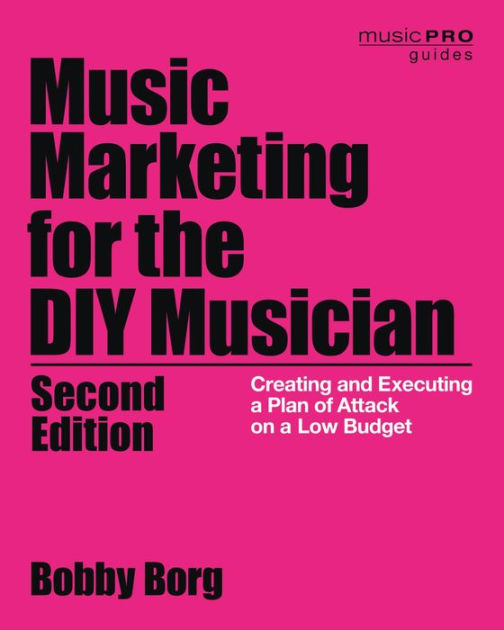
• Third, remember that you must strive to keep your work ethic in check over the long haul. Marketing is not something you do for just a few weekends. It’s a continual process. Like a shark that must keep swimming to take in oxygen, your career dies if you stop marketing and measuring your efforts!
10. Does this all sound daunting?
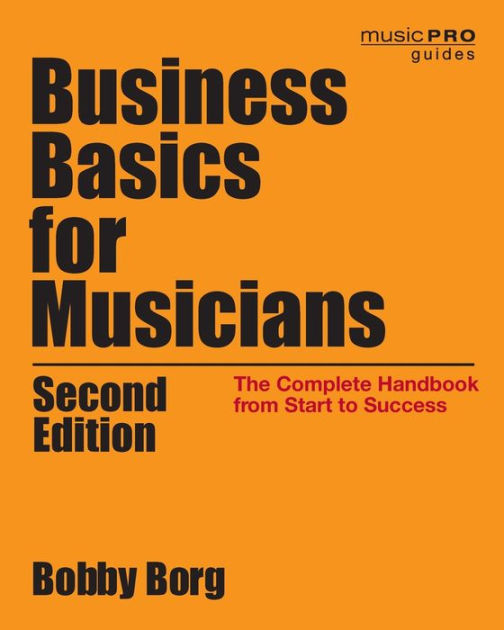 Look at it this way: your overall strategy can be to attract the attention of those who can help you by first helping yourself! Light as many small fires as you can till people see the smoke and take notice. Create some momentum in your career, and get the managers, producers, publishers, and investors to come to you. And they will come. As Guy Kawasaki, author of The Art of the Start, would say, investors are known to “pay attention to when the dogs are eating the dog food.” This might take a little time and hard work to make happen, but if you’re a “lifer” and not just some wannabe weekend warrior with a popstar fantasy, sweat and time shouldn’t mean a thang!
Look at it this way: your overall strategy can be to attract the attention of those who can help you by first helping yourself! Light as many small fires as you can till people see the smoke and take notice. Create some momentum in your career, and get the managers, producers, publishers, and investors to come to you. And they will come. As Guy Kawasaki, author of The Art of the Start, would say, investors are known to “pay attention to when the dogs are eating the dog food.” This might take a little time and hard work to make happen, but if you’re a “lifer” and not just some wannabe weekend warrior with a popstar fantasy, sweat and time shouldn’t mean a thang!
BOBBY BORG is the author of Music Marketing For The DIY Musician and Business Basics For Musicians, both in their Second Editions (2020). You can purchase Bobby Borg’s books and also sign up for his weekly free blog “Borg’s Blog” by visiting bobbyborg.com.





